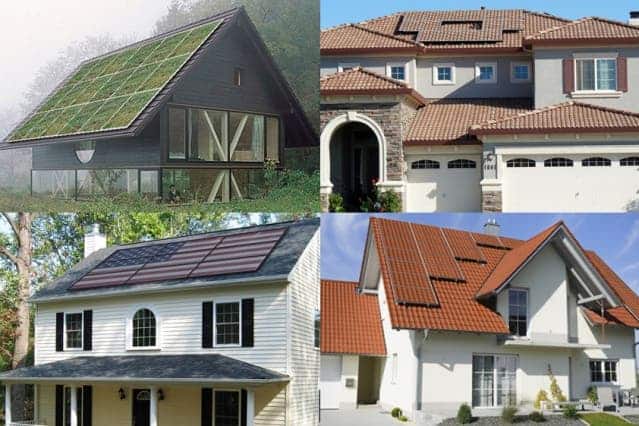
Less than 1 percent of American homes employ solar to power their homes. Some can’t afford the upfront costs while others don’t make this step because they aren’t convinced it’s going to work for them. But there are also a lot of people who can afford to and would like to install PV panels on their rooftops but choose not out of aesthetic considerations or out of concern their homes’ market value will suffer. A startup fresh out of MIT’s engineering and MBA classrooms hopes to render this argument moot.
The startup in question, called Sistine Solar, is offering solar panels that instead of the familiar blue luster can display virtually any image the client desires. For instance, a homeowner might want to cover all of his rooftop with PV panels and have them match the tiles. Business owners can cover kiosks or offices with panels that display ads or their logos. Strikingly, there are minimal efficiency losses involved.

This design of SolarSkin is not all that different from public transit see-through ads which cover a bus in billboards but inside passengers can see through them. These work by reflecting some of the light in a distinct pattern so people outside the bus can see the ad while allowing enough light through so passengers can see out. In the case of the Sistine panels, however, this effect is stretched to the max so only a minute quantity of light is let to reflect leaving the bulk of photons to hit the module, preserving efficiency. As for the cost, buyers can expect a 10 percent increase over panels of the same rated power capacity.

Sistine Solar is, of course, not the only company catering to solar aesthetics. Last year, Tesla announced with much fanfare a new line of ‘solar tiles’. It reportedly costs less than a new rooftop to install — we’ll just have to see about that now that Tesla announced it will start selling them by the end of the year.
Sistine’s offering, however, is different. While Tesla’s rooftop panels are actually tiles, Sistine is making panels that look like tiles. Any pattern or image can be displayed by the layer that covers the solar panel, no matter how intricate.
“We’ve come up with a process where we color-correct the minimal information we have of the image on the panels to make that image appear, to the human eye, to be similar to the surrounding backdrop of roof shingles,” says Anthony Occidentale, an MIT mechanical engineering student.
SolarSkin was first installed on a house in Norwell, Massachusetts where the 10-kilowatt system mimicked a cedar pattern. Sistine Solar now has 200 orders, mainly in California and Massachusetts. Custom designs aren’t all that popular instead most buyers opting for one of the patterns offered by the company. These include common rooftop patterns in the United States, such as asphalt shingles, clay tiles, and slate.
“We think SolarSkin is going to catch on like wildfire,” said co-founder Senthil Balasubramanian for MIT News. “There is a tremendous desire by homeowners to cut utility bills, and solar is finding reception with them — and homeowners care a lot about aesthetics.”
While I personally don’t believe rooftop solar is ugly, I know some people think this way — and they’re running out of excuses fast.


